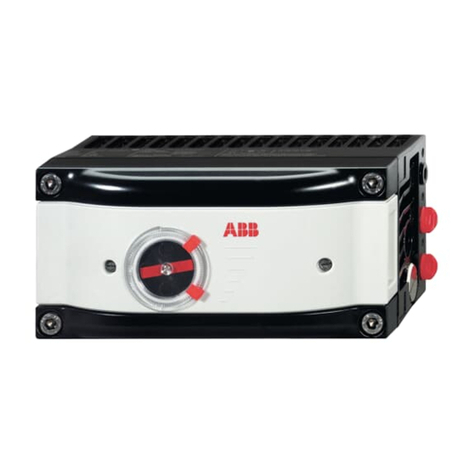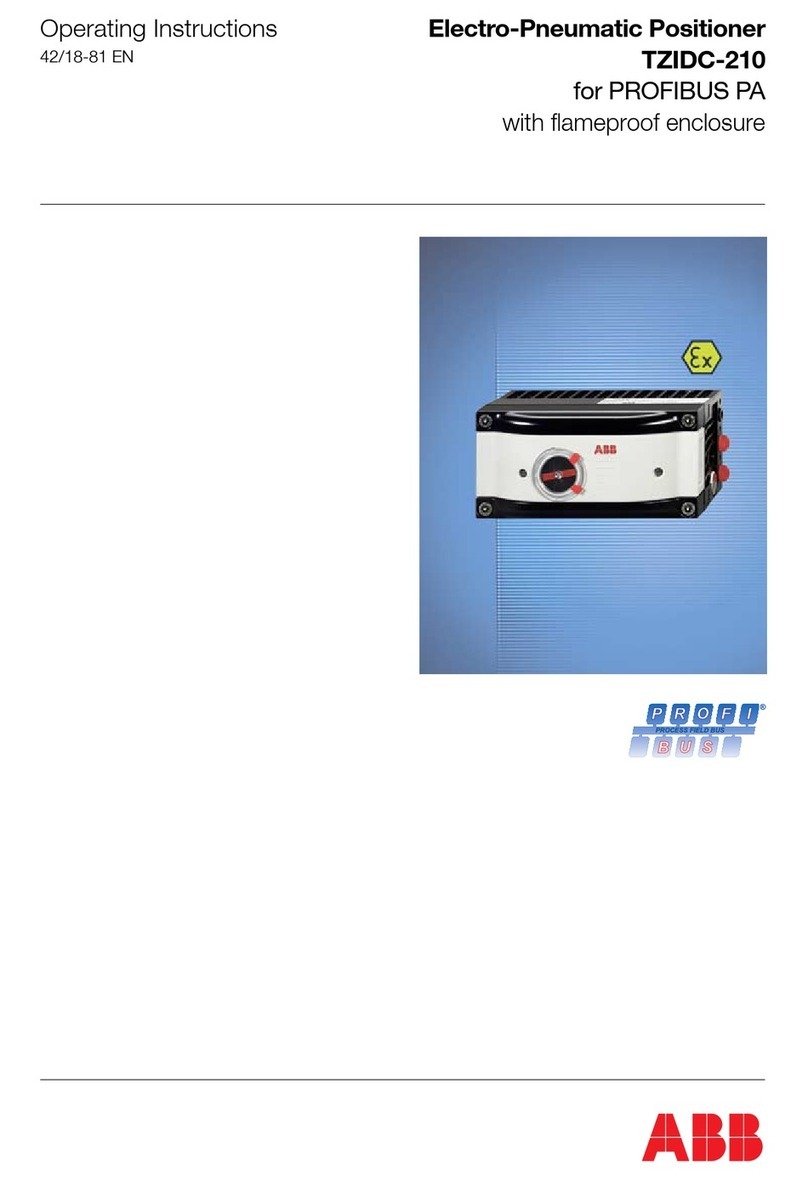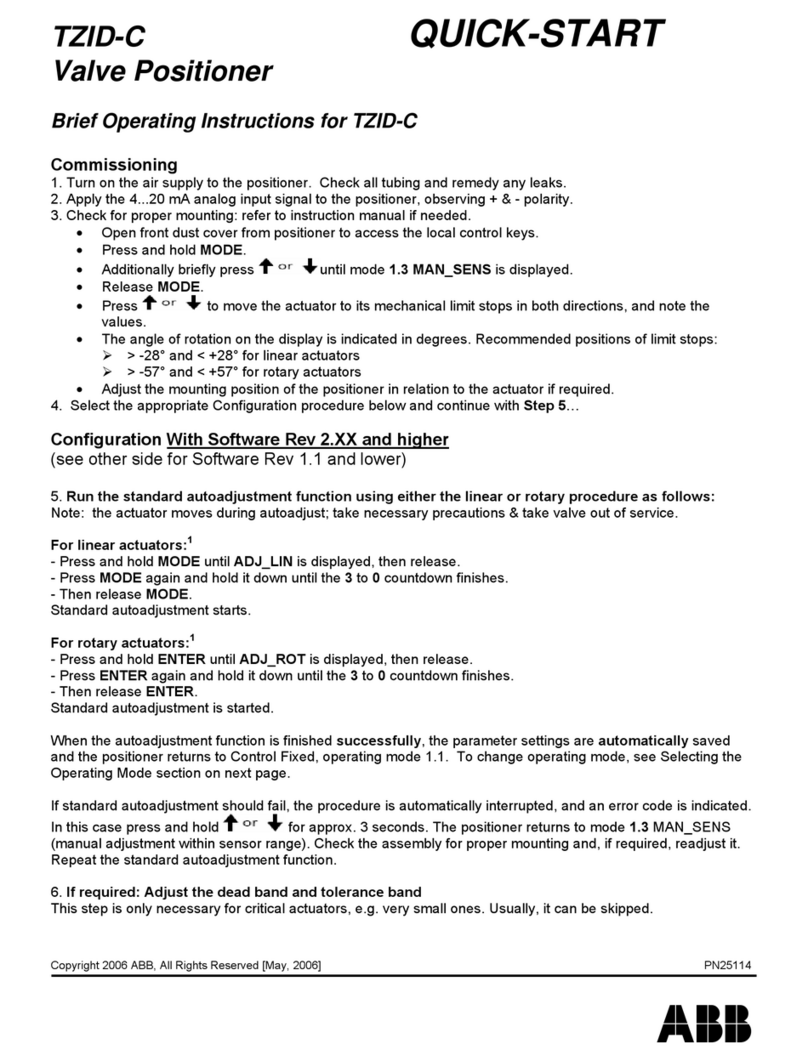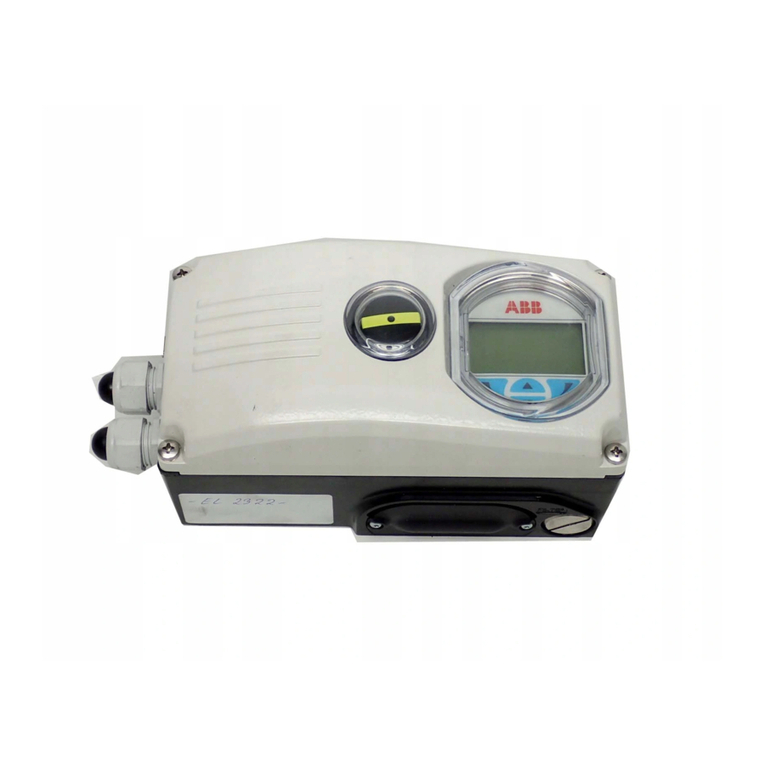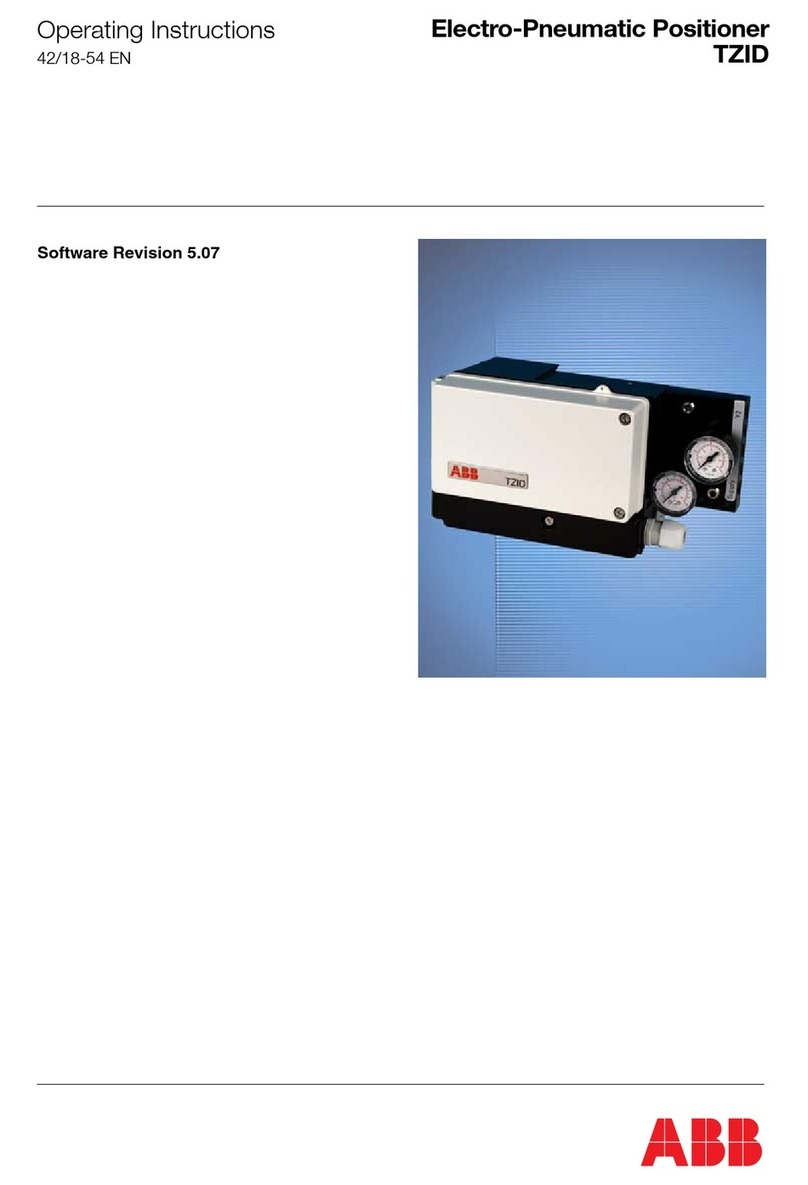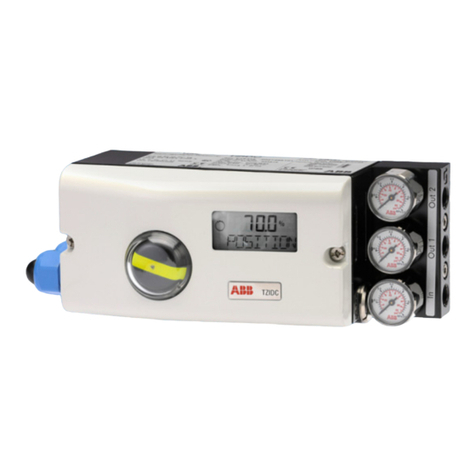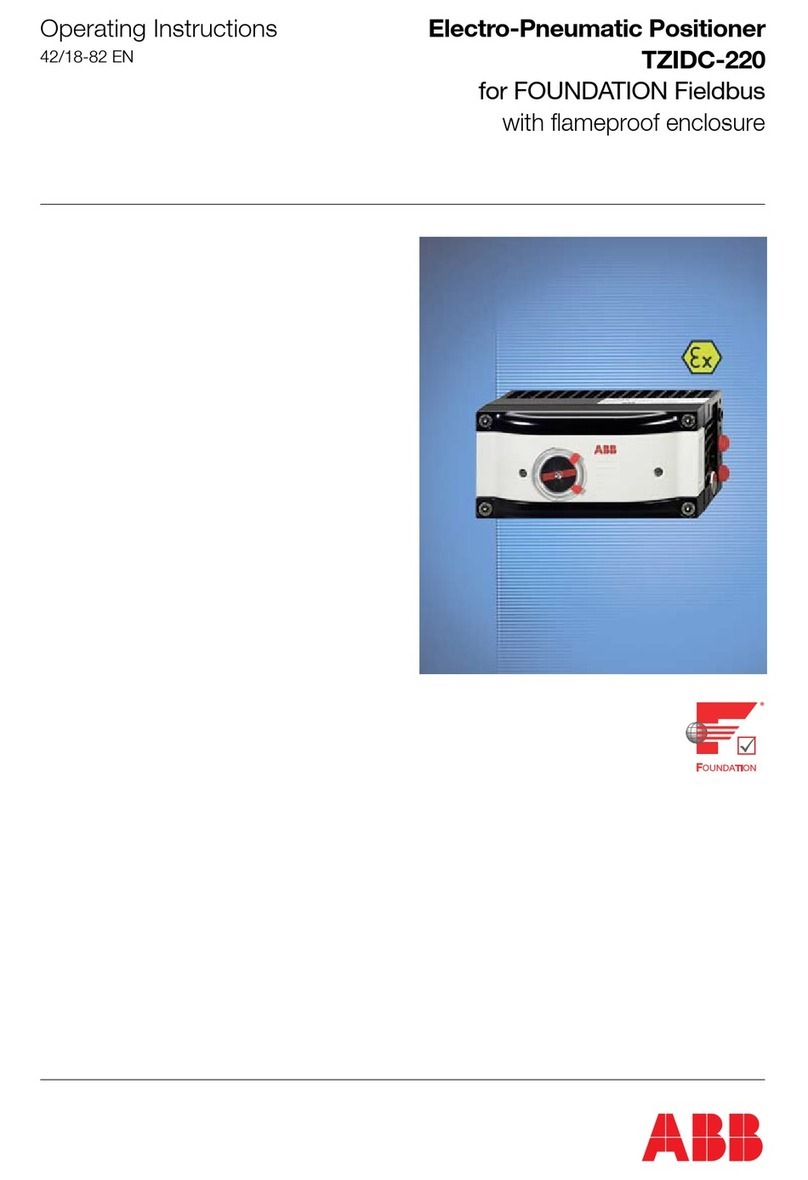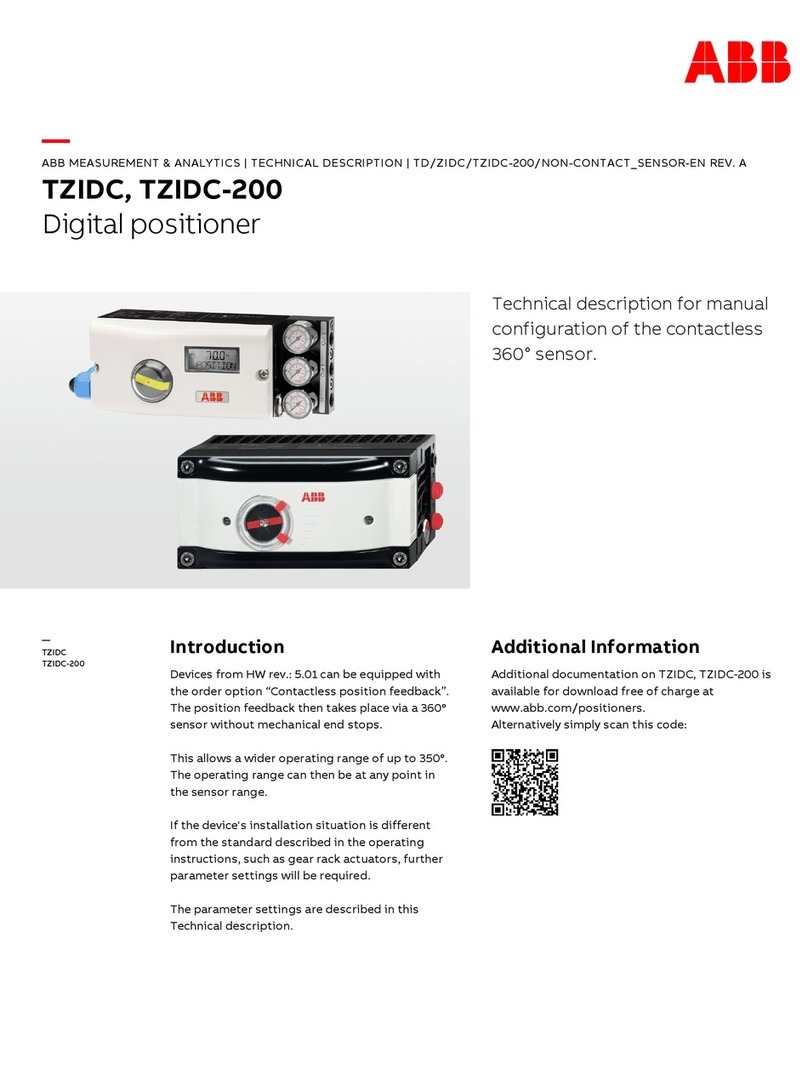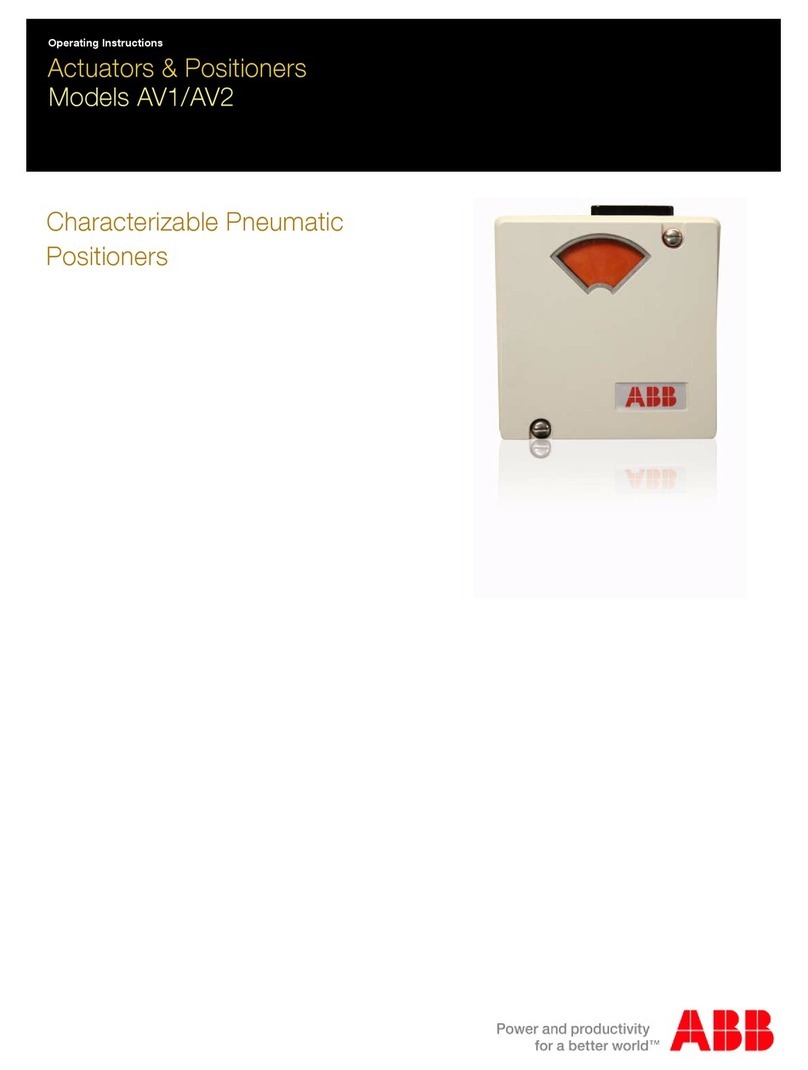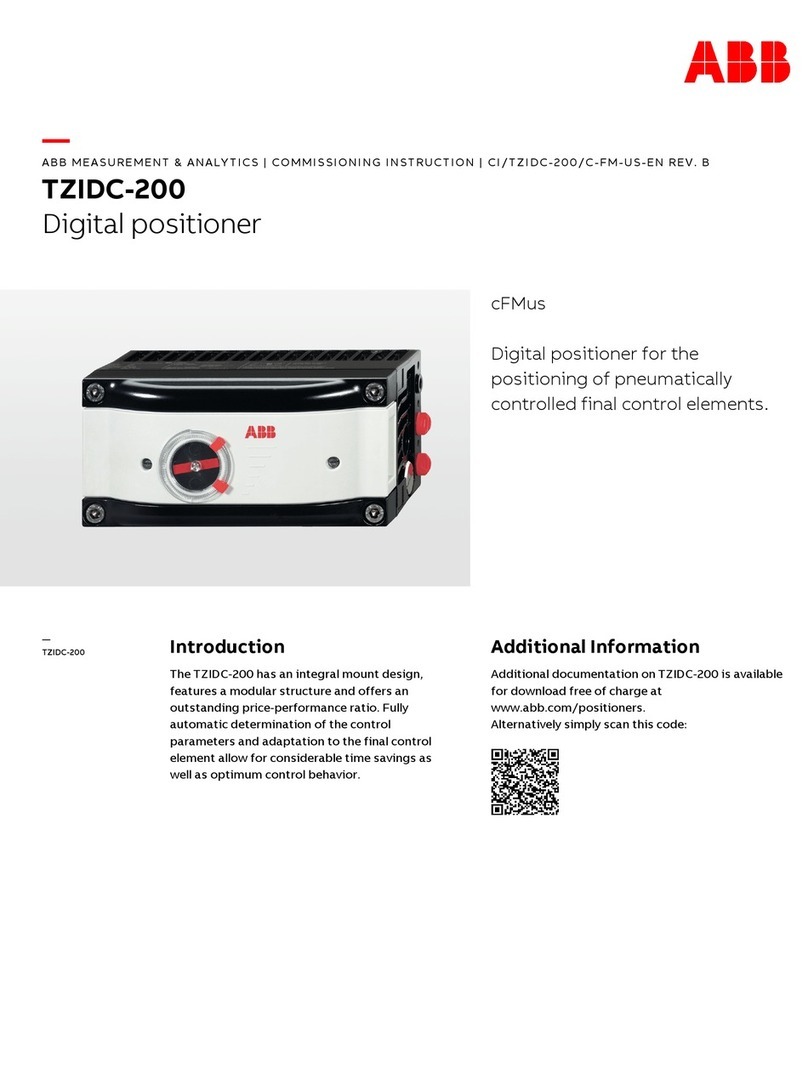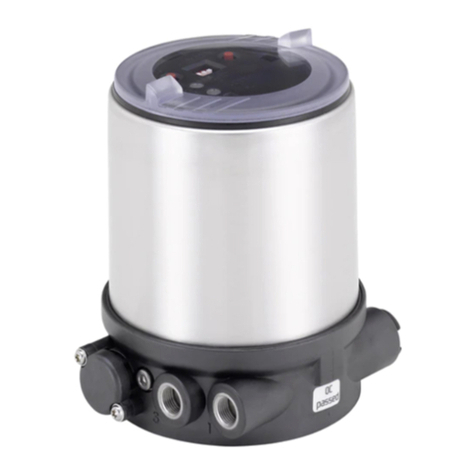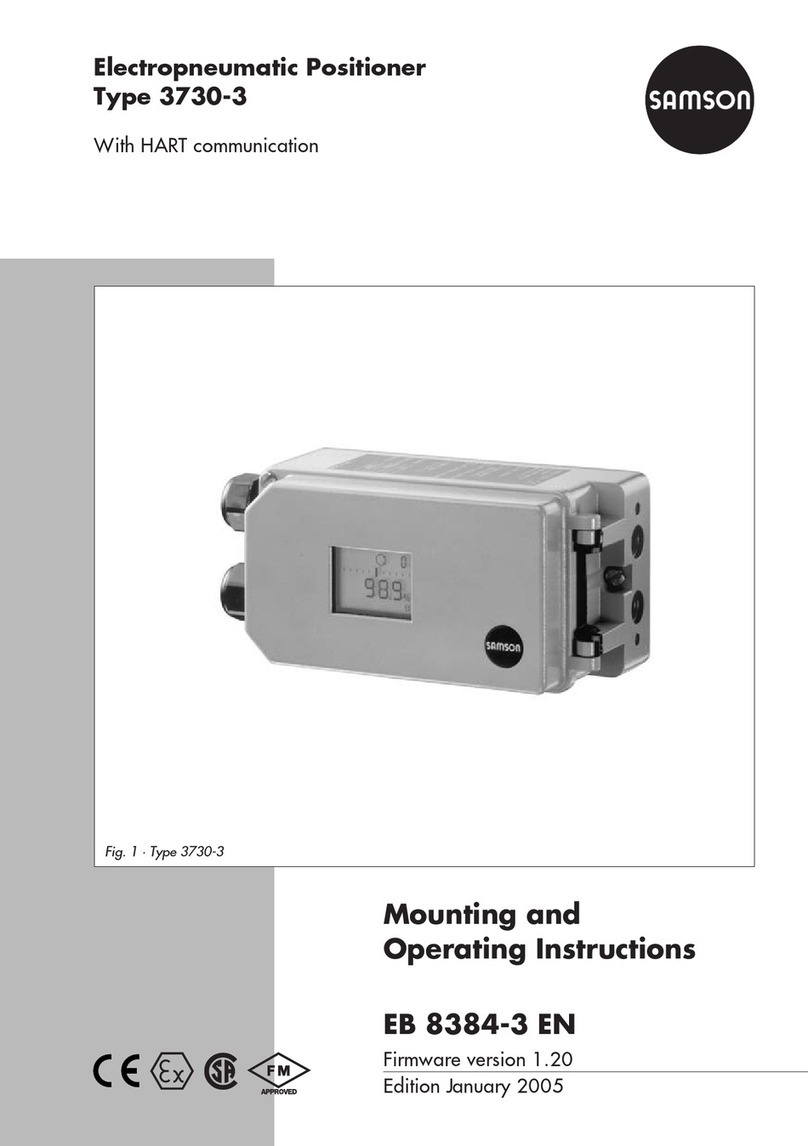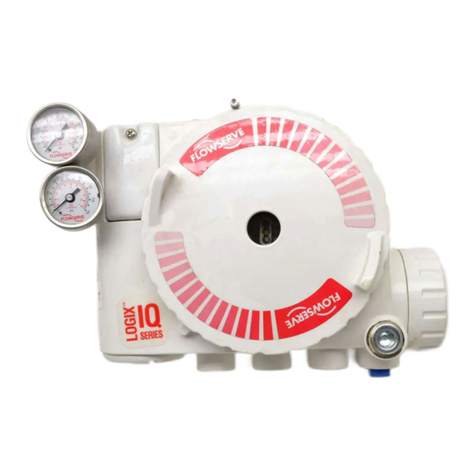
2 TZIDC-200 DIGITAL POSITIONER | OI/TZIDC-200-EN REV. C
Table of contents
Change from one to two columns
1Safety.......................................................................... 3
General information and instructions..................................3
Warnings....................................................................................3
Intended use .............................................................................4
Improper use.............................................................................4
Notes on data safety ...............................................................4
Warranty provisions.................................................................4
Manufacturer’s address..........................................................4
2Use in potentially explosive atmospheres .............5
General requirements..............................................................5
Commissioning, Installation ..................................................5
Notes for operation.................................................................5
Use, operation ..........................................................................5
Maintenance, repair.................................................................6
Product identification .............................................................7
Marking (name plate) .........................................................7
Preconditions for safe operation of the positioner ..........7
Cable gland........................................................................... 7
ATEX / EAC TR-CU-012 ............................................................8
ATEX Ex d ..............................................................................8
Temperature Data...............................................................8
Electrical Data......................................................................8
Pneumatic data....................................................................8
Special conditions...............................................................8
ATEX Ex i ...............................................................................9
Temperature Data...............................................................9
Electrical Data......................................................................9
Special conditions...............................................................9
IECEx.........................................................................................10
IECEx Ex d ...........................................................................10
IECEx Ex i.............................................................................10
Temperature Data.............................................................10
Electrical Data....................................................................10
Special conditions............................................................. 11
3Design and function ................................................ 12
Schematic diagram................................................................ 12
Principle of operation............................................................ 12
4Product identification ............................................ 13
Name plate .............................................................................. 13
5Transport and storage............................................ 14
Inspection................................................................................14
Transporting the device........................................................14
Storing the device..................................................................14
Ambient conditions ..........................................................14
Returning devices...................................................................14
6Installation................................................................14
Safety instructions................................................................ 14
Mechanical mounting.............................................................15
General.................................................................................15
Mounting on linear actuators......................................... 16
Mounting on rotary actuator.......................................... 19
Electrical connections........................................................... 20
Positioner / TZIDC-200 Control Unit Electrical
Connection..........................................................................21
Electrical data for inputs and outputs.......................... 22
Connection on the device................................................ 23
Pneumatic connections........................................................ 25
Air supply............................................................................ 26
7Commissioning ........................................................26
Operating modes................................................................... 27
Standard automatic adjustment ........................................ 27
Standard automatic adjustment for linear actuators*
.............................................................................................. 27
Standard automatic adjustment for rotary actuators*
.............................................................................................. 27
Sample parameters............................................................... 28
Setting the mechanical position indication................. 28
Setting the mechanical limit switch with proximity
switches.............................................................................. 29
Setting the mechanical limit switch with 24 V
microswitches ................................................................... 29
8Operation................................................................. 30
Safety instructions................................................................30
Parameterization of the device...........................................30
Menu levels...............................................................................31
HART® Parameter Overview................................................. 32
Parameter description HART®............................................. 33
9Diagnosis / error messages ...................................36
Error codes.............................................................................. 36
Alarm codes ............................................................................ 38
Message codes....................................................................... 39
10Maintenance ............................................................ 40
11Repair ....................................................................... 40
Returning devices ..................................................................40
12Recycling and disposal ........................................... 40
13Additional documents............................................ 40
14Appendix ...................................................................41
Return form............................................................................. 41
